Protect Your Home Or Business From Nuisance Animals & Rodents
Nuisance animals and rodents, though cute and furry, can become a big problem if they’re constantly invading your property or worse — your home. From raccoons to opossum to flying squirrels and groundhogs, these invasive critters can bring more than just destruction to your home or business; they can also bring disease putting you, your family, your pets, and your patrons at risk. Let’s explore some of the top nuisance animals and rodents we have to contend with here in Tennessee, and if any of these guys are bothering you, call the wildlife and pest control experts at Critter Wranglers now.

Nuisance Animals
Living in the great state of Tennessee means that pretty much any community you live in, from Alcoa to Concord and Powell to West Hills, you will have to look out for nuisance animals and rodents. Fortunately, you have your friends at Critter Wranglers on your side to provide raccoon removal, squirrel removal, skunk removal, and other services. Critter Wranglers provides nuisance animal removal services throughout Knoxville and beyond. Below you’ll find helpful and insightful information on some of our most common critters, and just what they might be up to in your yard or home.
Nuisance Animals & Rodents To Look Out For
Raccoon
Raccoon are the official state mammal for Tennessee. They are generally nocturnal animals and will spend most daylight hours in their dens. The average size of a raccoon is 12-30 pounds and has a ringed tail and fur that is grayish sprinkled with black. Their mating season begins in February, producing 2-5 cubs or kits per litter in April or May.
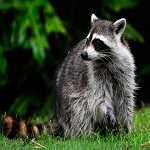
Why are Raccoon considered a nuisance animal?
Raccoon can wreak havoc on your home and yard during the mating and rearing seasons. They will raid bird feeders, trash cans and yards for food. Once a steady food source has been found, the raccoon will likely move in for good! Female raccoon will seek out safe and warm shelter to raise their young. This may be in a backyard shed, under your house or in your attic. They will actively seek out damaged or faulty construction to gain entry into their new home. We see it every day!
Already have a raccoon living in your attic or basement? Critter Wranglers can help! We can humanely trap the mother and her babies and repair any damage they may have caused. We can also help prevent raccoon from getting in your home with preventative seal ups. We can inspect your property and let you know of any areas that may become a problem later on. Give us a call if you have a raccoon problem in the greater Knoxville area!
Opossum
Opossum or possum are the only marsupial or pouched animal in the state of Tennessee. They are generally nocturnal but during the winter months they may forage during the day. The average size of an opossum is 9-13 pounds. They have long coarse grayish white fur and a scaly tail. Opossum have an extended breeding season from December to October and usually produce 2 litters per year, during February and June. Just one litter may have as many as 13 joeys or babies.

Opossum are scavengers. They thrive in suburban settings due to the abundance of food. They can find meals from your trash can, fruit trees, gardens, and even steal your pet’s food. They’re also great climbers due to their prehensile tail. They can take up residence in your attic, basement, crawlspace or shed. They tend to be a bit lazy, so they will look for easy entry into these areas. Generally, Opossum are solitary creatures, but we have pulled more than half a dozen from a single home during the winter months.
Already have an Opossum living in your crawlspace or digging in your trash can? Critter Wranglers can help! Call us if you need opossum removal in Knox County. We can humanely trap and relocate them. We can also prevent re-entry into your home by animal proofing any entry points the opossum may use.
Skunk
Skunks are usually black with white stripes. They have the ability to spray a smelly secretion up to 12 feet with great accuracy. The average size of a male skunk is 6-14 pounds and a female is 4-10 pounds. They are generally nocturnal and spend most of the daylight hours in their dens. Skunks breed during February and have litters of 4-8 kittens in May.

There are two main reasons people want rid of skunks, the damage done to lawns and the smell. Skunks grub at night which leaves small cone shaped holes in your yard. The more food they find the more your yard will look like a mine field! We have seen freshly sodded yards destroyed overnight by grubbing skunks and raccoon. Controlling the population around your home is the most effective way to limit the damage to your yard.
The skunk’s odor is something that is a real nuisance, especially during breeding season. It seems like you can’t go a couple of miles without smelling our little striped friend. If you think the smell is bad now just wait until they have a litter under your shed, deck or even your A/C unit. Juvenile skunks can’t control their sprayer as well as the adults so they like to practice. They are indiscriminate sprayers, spraying at everything, even each other. They are much like a child with a new toy!
If you have seen or are smelling a skunk on a regular basis, we suggest you give us a call! Critter Wranglers can help prevent a skunk and her family from taking up residence under your home or shed. We can also humanely handle your existing skunk problem and give suggestions on habit modifications to deter more skunks from trying to move back in!
Squirrel
In Tennessee, we have two common types of squirrels, the Eastern Gray Squirrel (pictured above) and the Eastern Fox Squirrel. The Gray Squirrel is the most common and is gray with a cinnamon tone and a white underbelly. The hair is much longer on its bushy tail, which is pale gray or white. The Fox Squirrel varies greatly in color, but usually has gray and black hair on their backs with an orange belly. The orange color may extend to the feet, cheeks, around the ears, and to the edges of their tail. Squirrels typically breed twice a year, December to February and May to June. The first litter is born in February or March and the second in June or July, each containing 2-4 kits.
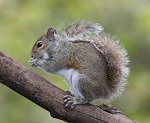
During winter months and breeding season, male and females may share nests. These nests are usually in trees, but may be in the attic or exterior walls of homes. It is extremely dangerous for squirrels to nest in attics or walls due to their aggressive gnawing on electrical wiring and cables. Their constant need to chew can cause extensive damage to any structure they inhabit.
Squirrels and other rodents cause an estimated 30,000 house fires each year. If you hear scurrying in your attic, scratching in your walls or see squirrels on your home call us for an inspection! We will find any possible or active entry points and trap your nuisance squirrels. We will also give you a list and estimate for any animal proofing that we feel is necessary to keep your home pest free. You are welcome to tackle these jobs yourself or have us complete the job for you.
Groundhog
Groundhogs, also known as woodchucks and whistle pigs, are the largest members of the squirrel family in East Tennessee. They have ever-growing incisors that must be worn down by chewing to prevent serious health issues. They are true hibernators, which means they enter their burrow in the late fall and sleep until spring.
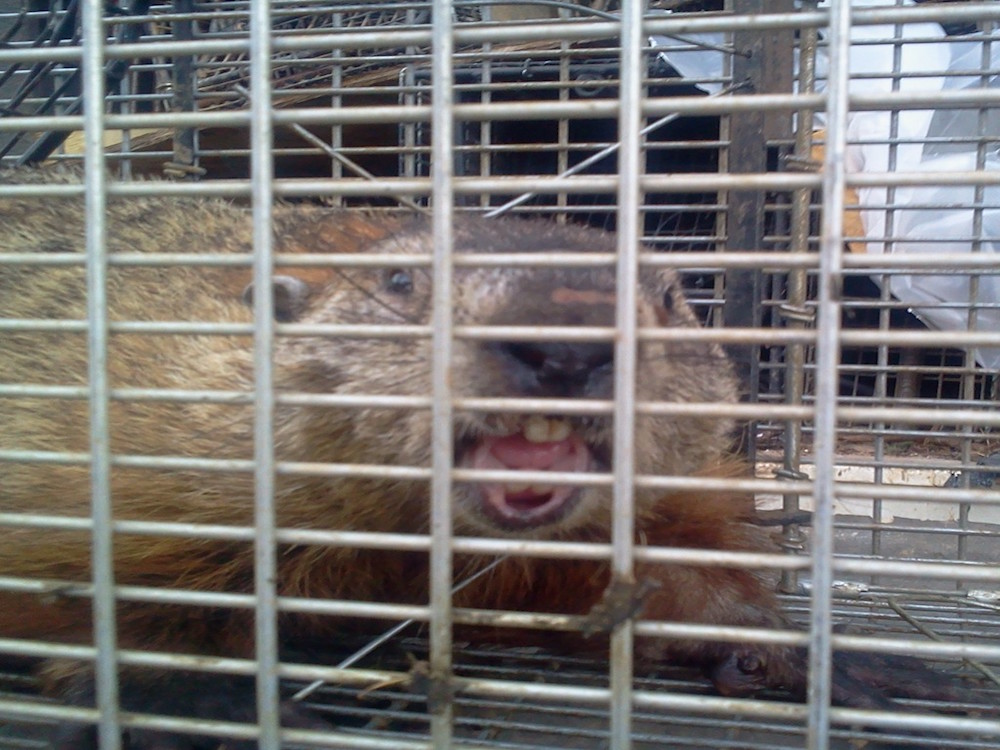
Groundhog burrows are 8 to 66 feet long and 2 to 4 feet deep and may have up to 4 entrances. The burrows and mounds of dirt left behind are not only unattractive but can be very hazardous to livestock and farm equipment. They also frequently damage vegetables, flower gardens and areas around buildings. In some cases, a groundhog can actually undermine home foundations. We most frequently find these critters under decks, sheds, barns or against building foundations. Already have a groundhog spending too much time in your yard? Call Critter Wranglers now before they go into hibernation or cause any more damage!
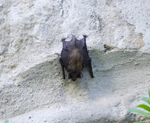 Bats
Bats
Bats are a common problem in Knoxville and throughout the surrounding communities. They are considered flying mammals and can be active year-round, depending on the weather. Bats are helpful in that they are insectivores who provide insect removal by their own nature. Even though they help reduce populations of moths, mosquitoes, and other annoying insects in your yard, they can become a nuisance quite quickly.
Bats are nocturnal and love finding shelter and safety in dark places. If you’ve ever wondered, “Why do bats like attics?”, it’s because of a number of reasons. Attics are attractive nesting sites for bats because they are often dry, dark, and close to food and water sources. So if you hear a noise in your attic, walls, or chimney around dusk and dawn, you can bet it’s bats. Additionally, bats are carriers of all kinds of diseases like rabies, as well as parasites, which can threaten you, your family, and your pets. Not only that, their feces, also called guano, is foul-smelling, as is their urine. You definitely don’t want that odor smelling up your home.
If you think you have bats in your home or business, trying to remove them yourself can be dangerous. Call Critter Wranglers immediately for bat removal and we’ll take care of the problem for you.
Signs It’s Time to Call the Pest Control Experts
Having a few critters on your property is fine — until they become a nuisance. Oftentimes it is hard for people to know when it’s time to take action against these creatures. Here are a few signs telling you it may be time to reach out to your friends at Critter Wranglers.
- You notice nesting materials in your yard, your garage, your shed, under your porch, or in your home (typically in attics and/or basements).
- You spot animal or rodent droppings in your garden, around your trash cans, or in your home.
- You hear scurrying or scratching sounds in the walls and ceilings, or in the attic, especially at night.
- You notice structural damage to your home or outdoor spaces such as gnaw marks, scratch marks, or holes on the exterior or interior walls, patio furniture, on your lawn, or in your garden.
- Your trash cans are tipped over, or you notice your recycling bins have been rummaged through.
- Your pet food bags have been damaged or completely torn open.
- The food packaging in your pantry, including both bagged and boxed foods, has holes or tears.
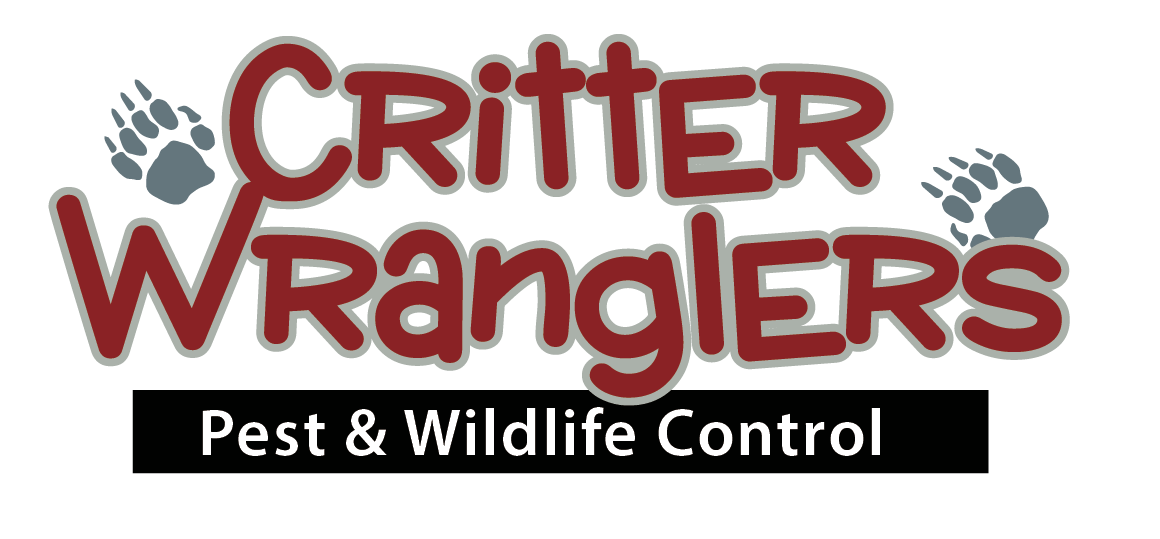
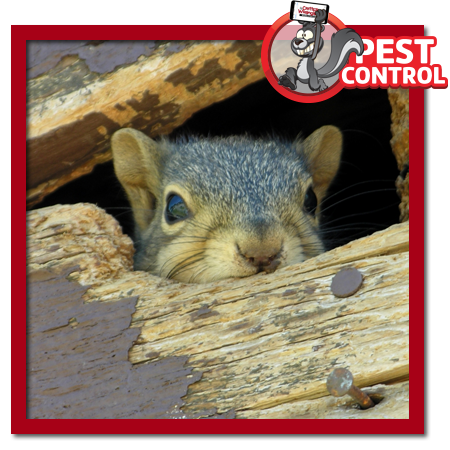
 Raccoons
Raccoons